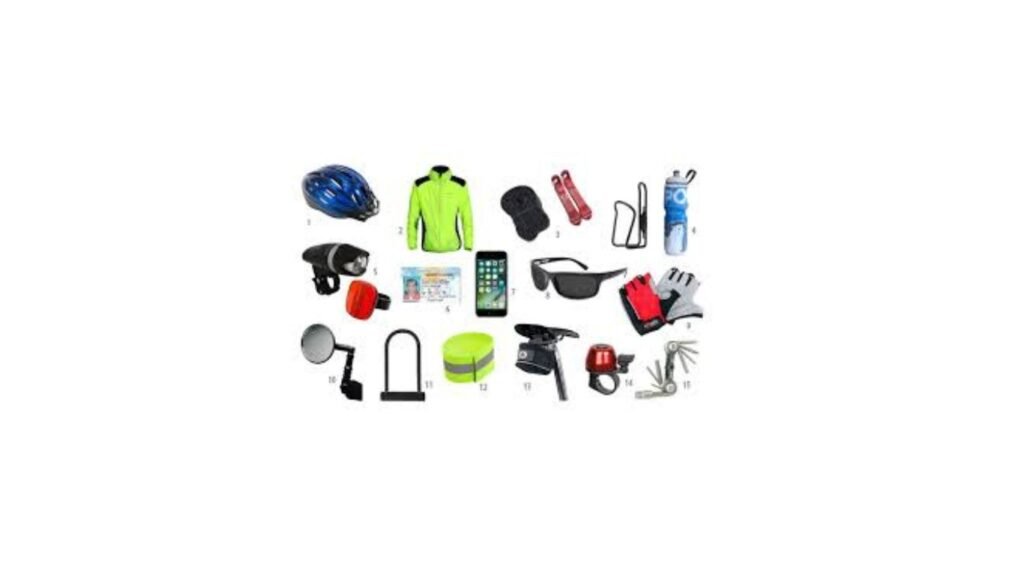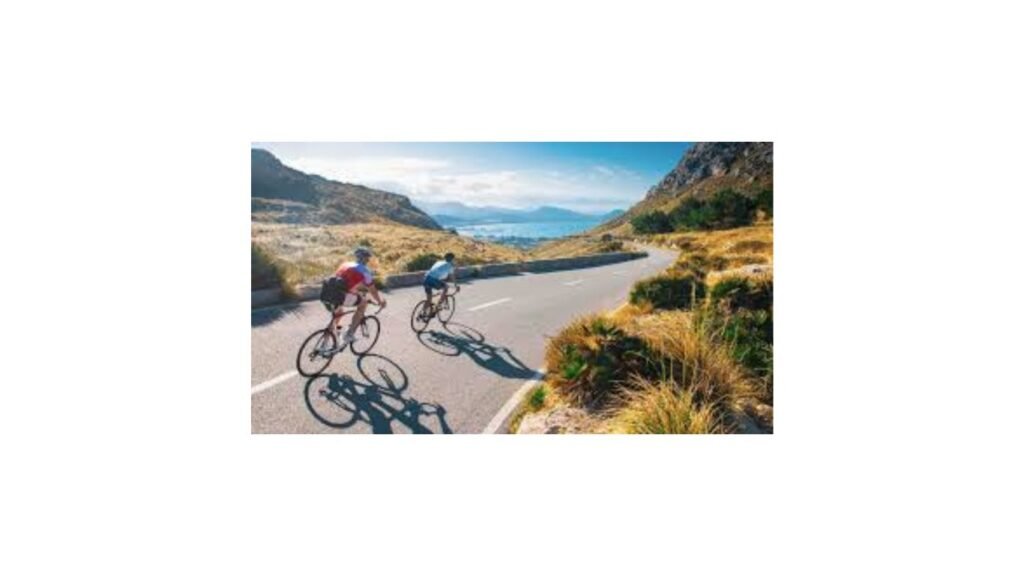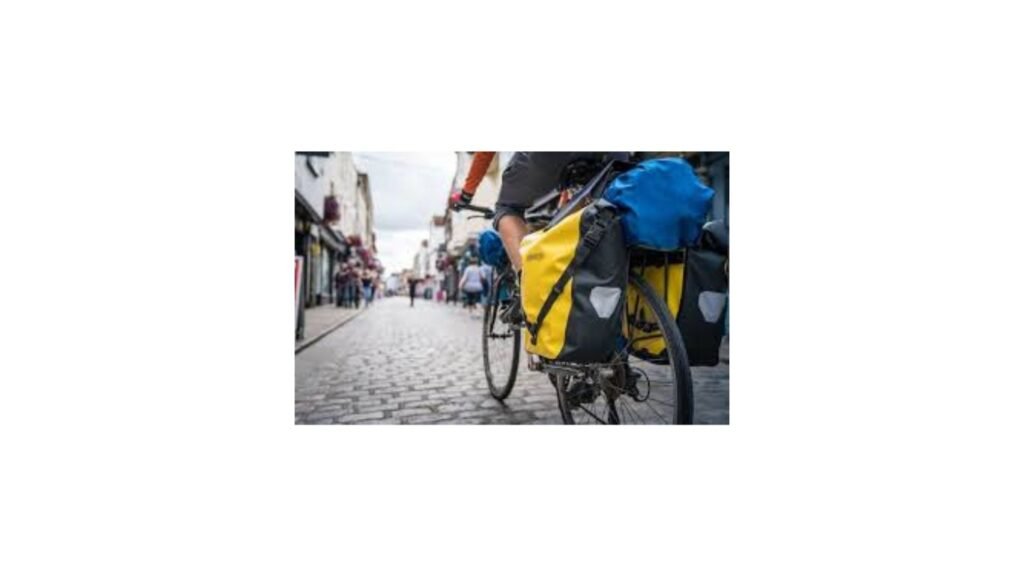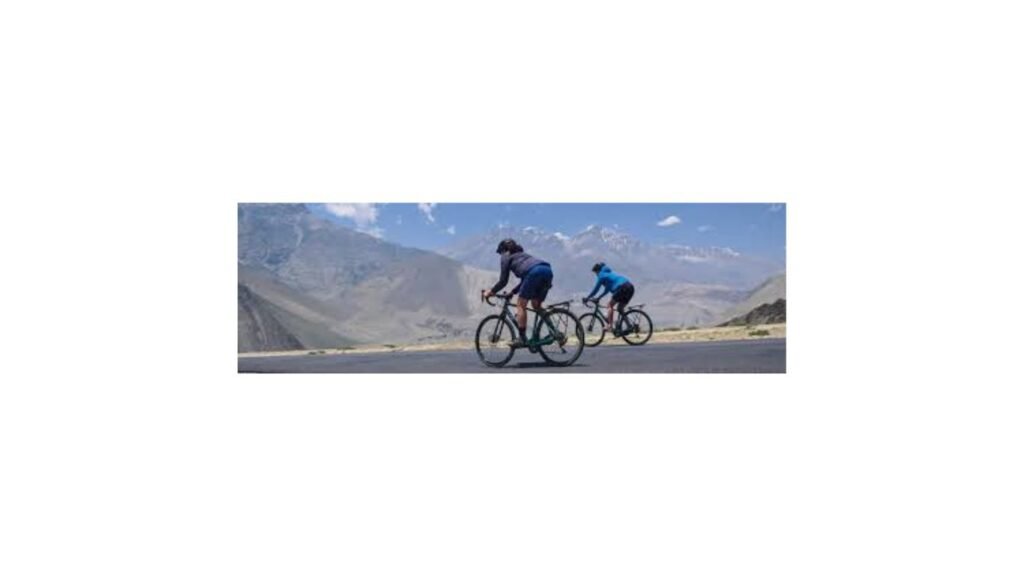There is something undeniably poetic about the sound of wheels humming over tarmac, the rhythmic cadence of pedaling, and the slow, immersive unveiling of the world through the lens of a bicycle. For those who seek more than a destination—who crave the journey, the sweat, the solitude, and the stories—cycling is not just a mode of travel. It is an awakening.
In recent years, bicycle touring has surged in popularity. Fuelled by a desire for sustainable travel and a deeper connection to landscapes and cultures, more adventurers are embracing two wheels as their passport to the planet. According to the Adventure Travel Trade Association, cycling tours now rank among the top five global adventure travel activities. As digital nomads and eco-conscious explorers trade in plane tickets for panniers, this guide will help you navigate every facet of your journey.
Whether you’re cycling through the vineyards of France, crossing the Andes in South America, or tracing coastal routes in Southeast Asia, this Cycling Travel Guide equips you with everything you need—from planning and gear selection to safety, accommodations, and personal tips drawn from real-world experience.
Table of Contents
Planning Your Cycling Adventure
Crafting a memorable cycling journey begins long before your tires meet the road. The planning phase defines not only where you’ll go, but how you’ll move, what you’ll carry, and the challenges you’ll face. A thoughtful approach lays the groundwork for a smooth, enriching experience.
Choosing Your Destination
The destination you choose will shape the rhythm and flavor of your adventure. Some routes offer rugged remoteness, while others promise cultural immersion or postcard-perfect vistas.
Europe remains a top destination for cycle touring, thanks to its well-developed infrastructure and scenic diversity. The Danube Cycle Path, for instance, offers a relatively flat ride through ten countries, rich in heritage and hospitality. In contrast, the Pamir Highway in Central Asia demands grit and altitude tolerance but rewards with raw, breathtaking beauty.
Consider the following when selecting a location:
- Terrain: Flat or mountainous? Paved or gravel?
- Climate: Will you ride under baking sun, spring rains, or alpine chill?
- Language and culture: Are you seeking familiarity or novelty?
- Infrastructure: Are bike paths, repair shops, and accommodation readily available?
Trust your instincts, but match your ambition to your current fitness and travel experience.
Determining Your Route and Distance
Once you’ve pinpointed a destination, plot a route that aligns with your pace and preferences. Beginners may feel more comfortable on loop routes or shorter point-to-point rides. Veterans might pursue transcontinental odysseys.
Use digital route planners like Komoot or Ride with GPS to analyze elevation, road types, and user-submitted feedback. Don’t forget paper maps—still invaluable in remote areas or when batteries fail.
Be realistic about daily distances. Touring cyclists average 60–100 km per day, depending on terrain, load, and rest days. Plan for flexibility—weather, breakdowns, or local discoveries will reshape your itinerary.
Setting a Budget
Cycle travel can be one of the most economical ways to explore the world—or surprisingly costly if poorly planned. Your budget should reflect the length of your trip, the cost of living in your destination, your accommodation choices, and how self-sufficient you intend to be.
Typical expenses include:
- Gear and bike preparation
- Travel insurance and visas
- Daily food and lodging
- Emergencies or repairs
A minimalist, camping-heavy journey through Southeast Asia may cost as little as $10–20/day. Touring through Western Europe with hostel stays and meals out may push you to $50–100/day. Set your financial boundaries early to avoid stress on the road.
Best Time to Travel
Timing your journey correctly enhances your experience and reduces risks. Research the climate of your chosen destination during your planned travel window.
Avoid monsoon seasons, deep winters, or blistering summer heat. Shoulder seasons—spring and autumn—often provide the best balance of weather, cost, and crowd levels. For instance:
- Europe: May–June or September
- Southeast Asia: November–February
- South America’s Andes: April–October
Daylight hours and wind patterns also matter. In Patagonia, riding south-to-north helps mitigate fierce headwinds.
Essential Travel Documents
Paperwork can make or break your trip. Before departure, ensure the following are in order:
- Valid passport (with at least six months before expiry)
- Appropriate visas or travel authorizations
- Vaccination certificates if required (e.g., Yellow Fever)
- Travel insurance covering cycling-related accidents and evacuation
- Copies (physical and digital) of all documents
Some countries require proof of onward travel or sufficient funds. Check entry requirements with official consular sites, not just blogs or forums.

Preparing Your Bike and Gear
The bicycle is more than your vehicle—it becomes your home, your travel companion, and your lifeline. Proper preparation ensures not only comfort but resilience when facing the unexpected. Selecting the right gear and maintaining it well can define the success of your journey.
Selecting the Right Bike
Your choice of bike must match your terrain, load, and riding style. Touring bicycles, with their steel frames, wide gear ranges, and mounting points for panniers, are built for durability and long-haul comfort. Popular models include the Surly Long Haul Trucker and the Kona Sutra.
For more rugged, off-road adventures, bikepacking rigs—often gravel or hardtail mountain bikes—are favored for their agility and minimalist setup.
Key features to consider:
- Frame material: Steel offers comfort and repairability; aluminum is lighter but harsher.
- Gearing: A wide range is essential for climbing hills with a loaded bike.
- Tire size: Wider tires (35–50mm) provide better shock absorption and stability.
- Mounting options: Ensure your frame accommodates racks, water bottles, and fenders.
Don’t buy blindly—test ride different models, ideally under load, before committing.
Necessary Bike Maintenance
A well-maintained bike can travel thousands of kilometers with minimal issue. Learn basic maintenance before setting out:
- Cleaning and lubricating the chain every few days
- Adjusting derailleurs and brakes
- Truing wheels and tightening bolts
- Replacing brake pads and worn tires
Carry out a full tune-up before your trip, ideally by a professional mechanic. Ensure all bearings (hubs, bottom bracket, headset) are in good condition, and consider replacing cables and chains if they’ve seen significant use.
Packing Essential Tools and Spare Parts
On the road, mechanical problems are inevitable. Being equipped to solve them makes all the difference.
Essentials include:
- Multi-tool with Allen keys and chain breaker
- Spare tubes and tire levers
- Puncture repair kit
- Mini-pump or CO₂ inflator
- Chain lube and rag
- Zip ties, duct tape, spare bolts
Depending on your route’s remoteness, bring a spare tire, brake pads, derailleur hanger, and cables. Pack everything in accessible, weatherproof bags and practice using each tool before departure.
Choosing the Right Cycling Gear
Cycling apparel should balance comfort, versatility, and weather protection. Choose moisture-wicking, quick-drying fabrics and layer strategically:
- Base layer: Wicks sweat
- Mid-layer: Insulates
- Outer layer: Shields from wind and rain
Padded shorts or bibs reduce saddle soreness. A quality rain jacket and gloves are indispensable. A helmet is non-negotiable, and mirrored sunglasses protect from glare and debris.
For shoes, opt for stiff-soled touring shoes or flat pedal options depending on preference. Prioritize comfort over technical performance.
Packing Light and Efficiently
Weight is your enemy on a bike tour. Every extra kilo will feel heavier by the third hill. Prioritize multipurpose items and keep your packing minimal.
Divide your gear into:
- Front panniers: Lighter items like clothes or cooking gear
- Rear panniers: Heavier gear like tools and food
- Handlebar bag: Essentials (passport, wallet, camera)
- Saddle bag or top tube pouch: Tools or snacks
Use dry bags or compression sacks to stay organized and waterproof. Lay everything out before packing, then remove at least 20%—you likely won’t need it.

Navigating and Staying Safe on the Road
The open road is thrilling, but it comes with unpredictability. Navigation, safety, and adaptability are crucial skills for every cycling traveler. Whether you’re in bustling urban zones or remote mountain passes, a few key habits and tools will help you stay on course and out of harm’s way.
Navigation Tips and Tools
Modern technology has transformed how cyclists navigate the world. GPS apps like Komoot, Gaia GPS, and Ride with GPS allow you to plot routes, check elevation profiles, and download offline maps. Google Maps works well in cities but may mislead you on unpaved roads or paths unsuitable for bicycles.
Use a handlebar-mounted smartphone holder or GPS device for quick visibility while riding. However, always carry physical maps in case your device fails. National Geographic Adventure Maps or local topographic maps are excellent for remote areas.
Mark rest stops, grocery stores, and accommodations in advance, but stay flexible. Local recommendations often lead to the best detours.
Road Safety Considerations
Cyclists are vulnerable road users. Defensive riding and awareness can prevent accidents:
- Ride visibly: Wear bright colors and use front/rear lights day and night.
- Obey traffic laws: Follow the same rules as motor vehicles.
- Communicate: Use hand signals and make eye contact at intersections.
- Avoid distractions: Don’t wear headphones while riding.
In rural areas, expect varied driving standards. In countries like the Netherlands or Denmark, bike infrastructure is superb. In others, like India or Morocco, cycling means adapting to chaotic roads. Be alert, assertive, and respectful.
Dealing with Unexpected Challenges
Flat tires, missed ferries, and sudden storms aren’t setbacks—they’re part of the story. Resilience is your most vital gear.
Common road challenges include:
- Mechanical breakdowns: Know basic repairs or seek local help.
- Weather extremes: Shelter during lightning storms or high heat.
- Closed roads or detours: Use local knowledge or backtrack safely.
- Language barriers: Learn basic phrases or use translation apps like Google Translate.
Stay adaptable. Each challenge becomes a memory, and each solution builds your confidence.
Emergency Preparedness
Emergencies are rare but serious. Be ready for accidents, illness, or getting lost:
- Carry a first aid kit tailored for cyclists: bandages, antiseptic, pain relief, blister pads, tweezers.
- Save emergency numbers and local addresses in your phone and on a paper copy.
- Share your route and check-ins with someone at home.
- Know where the nearest hospitals, embassies, and repair shops are in each region.
Some cyclists carry a GPS tracker with SOS features, like a Garmin InReach, especially when riding in remote terrain without cellular coverage.
Insurance and Health Precautions
Travel insurance isn’t a luxury—it’s essential. Choose a plan that covers:
- Medical treatment and emergency evacuation
- Trip cancellations or delays
- Theft or damage of cycling gear
- Personal liability (if you accidentally injure someone or damage property)
World Nomads and SafetyWing are popular among cyclists for their global coverage and adventure sport clauses.
Also, consult a travel doctor for vaccinations or malaria prophylaxis depending on your region. Bring essential medications and know how to access healthcare in each country.

Accommodation and Food on Your Cycling Trip
Food and shelter—two essentials that shape your daily rhythm on the road. Unlike conventional travel, a cycling tour demands higher caloric intake and more flexible lodging strategies. Mastering these two areas will boost your comfort, recovery, and morale.
Finding Bike-Friendly Accommodations
Not every hotel welcomes cyclists with open arms. Fortunately, a growing network of bike-friendly accommodations makes planning easier.
Websites like WarmShowers (a hospitality exchange for touring cyclists), Booking.com (with “bicycle-friendly” filters), and Hostelworld offer a variety of options. Look for amenities like:
- Secure bike storage
- Laundry facilities
- Early check-ins or late check-outs
- Ground-floor rooms or elevators
In countries like Germany and the Netherlands, “Bett+Bike” certified lodgings cater specifically to touring cyclists. In North America and Australia, many rural inns and motels understand cyclists’ needs—especially along popular trails like the TransAmerica Bicycle Route.
Camping vs. Hostels vs. Hotels
Your accommodation style influences not only budget, but the pace and freedom of your journey.
- Camping: Offers unmatched freedom and connection to nature. Wild camping is legal (or tolerated) in countries like Scotland, Norway, and parts of Canada. Carry a lightweight tent, sleeping pad, and seasonal sleeping bag.
- Hostels: Great for meeting other travelers. Many offer communal kitchens, gear storage, and useful local advice.
- Hotels/Motels: Provide comfort after long days, particularly in bad weather or remote areas. They cost more, but a hot shower and private bed can be worth every cent.
Many cyclists blend all three, choosing based on weather, fatigue, and availability. Apps like iOverlander or Maps.me can help spot hidden campsites or budget stays.
Sourcing Food and Water
You’re burning thousands of calories daily—up to 6,000 on long, hilly days. Staying fueled is non-negotiable.
Carry a mix of:
- Fast fuel: trail mix, fruit, energy bars
- Staple carbs: pasta, rice, oats
- Proteins: canned beans, eggs, lentils, cheese
- Hydration: always carry 2–4 liters, more in hot or dry regions
In rural areas, shops may be scarce. Stock up whenever you see a grocery store. In Muslim countries during Ramadan, eating hours shift—plan accordingly. In regions like the Andes or the Pamirs, water sources are unpredictable; carry purification tablets, a Sawyer filter, or a UV sterilizer.
Respect local customs—eating what’s offered builds connections and often leads to unforgettable meals.
Cooking on the Road
Cooking your own meals reduces costs and increases flexibility. A compact camp stove and simple cookware open up a world of hot meals at roadside stops or forest clearings.
Popular options:
- Canister stoves (like the MSR PocketRocket): Lightweight, fast-boiling, but dependent on fuel availability.
- Alcohol stoves: Inexpensive and simple; fuel often found globally.
- Multi-fuel stoves: Versatile and powerful, ideal for remote travel.
Basic cooking gear includes:
- Pot and lid
- Spoon or spork
- Knife
- Small cutting board or flat surface
- Wash cloth and biodegradable soap
Quick, nutritious recipes include lentil stew, vegetable pasta, oatmeal with dried fruit, or rice with sardines and curry powder.
Dietary Considerations
Dietary restrictions or preferences (vegan, gluten-free, keto) require careful planning. While urban centers cater to varied diets, rural areas may not.
Bring nutritional staples: protein powder, nuts, supplements. Learn the local language terms for your dietary needs. Apps like HappyCow or Google Translate can help identify safe food options abroad.
Cycling demands flexibility—sometimes the only available meal may not match your ideals. Plan for balance, not perfection.

Tips for Different Cycling Travel Styles
Cycling travel isn’t a one-size-fits-all endeavor. Your style—be it leisurely or extreme, solo or social—affects everything from your gear to your mindset. Understanding the differences helps you tailor your approach and maximize enjoyment.
Touring vs. Bikepacking
Though often used interchangeably, touring and bikepacking have distinct personalities.
- Touring typically involves paved roads, racks and panniers, and more cargo capacity. It favors comfort, durability, and road efficiency. Classic routes like EuroVelo or the U.S. Pacific Coast suit this style well.
- Bikepacking trades panniers for frame bags, focusing on minimalism and off-road capability. With gravel or mountain bikes, riders explore remote trails, forest roads, and singletrack. It demands better fitness, technical skills, and gear restraint.
Choose based on your route and preference. Touring suits long-distance riders seeking ease and cultural encounters; bikepacking calls those craving solitude and rugged wilderness.
Long-Distance vs. Short-Distance Trips
The scale of your trip profoundly impacts logistics and experience.
- Short trips (a weekend or a week): Great for beginners. You can test your gear, build confidence, and stay within a local radius. Regional loops, rail trails, and coastal roads offer rewarding scenery with easy logistics.
- Long-distance journeys (months or more): Require deeper planning, robust gear, and mental endurance. These are life-defining undertakings—think the Silk Road, the Pan-American Highway, or the Cape to Cairo route.
Long trips don’t just stretch mileage—they reshape your relationship with time, space, and self. Be ready to evolve as a rider and as a person.
Solo vs. Group Cycling
Riding alone or with others changes the emotional and practical fabric of your journey.
- Solo cycling offers freedom, introspection, and self-discovery. You set the pace, make spontaneous decisions, and grow through solitude. However, it can be lonely and demanding in tough situations.
- Group cycling brings shared joy, safety in numbers, and logistical support. Whether with friends or strangers, group dynamics require compromise and communication.
Some cyclists begin solo and find companions on the road—a common and enriching experience.
Supported vs. Self-Supported Trips
Your level of independence influences gear, planning, and costs.
- Self-supported riders carry everything—from tents to tools—and relish autonomy. It demands more preparation but offers unmatched flexibility and pride.
- Supported tours (like those organized by World Expeditions or TDA Global Cycling) provide vehicles, guides, and logistics. These are ideal for those who prefer focusing on the ride, not the details.
Both styles are valid. Choose what aligns with your time, goals, and comfort level.
Urban vs. Rural Cycling Adventures
Cities and wilderness offer dramatically different cycling experiences.
- Urban cycling immerses you in culture, history, and energy. You can explore architecture, markets, museums, and nightlife—on two wheels. Bike-sharing programs and dedicated lanes (like those in Copenhagen or Montreal) make it accessible.
- Rural cycling means open landscapes, quiet roads, and intimate encounters with nature and local life. It’s where silence, stargazing, and raw landscapes take center stage.
Many great trips blend both—imagine rolling from the heart of Istanbul to the coastlines of the Aegean, or from Tokyo’s neon to Japan’s serene rice terraces.
FAQ
Is cycle touring safe?
Yes—when planned properly, cycle touring is a safe and fulfilling way to travel. Most dangers stem from traffic, weather, or poor preparation rather than crime or violence. Follow road rules, ride defensively, and stay aware of your environment. Research your route ahead of time and trust local advice. With the right mindset and tools, you can handle most situations confidently.
How fit do I need to be to start cycling travel?
You don’t need to be an elite athlete, but a basic level of endurance and cycling comfort helps. Start with local day rides or overnight trips to build stamina and familiarity with your gear. Your body adapts quickly on the road—pace yourself, listen to your limits, and prioritize rest and nutrition.
Can I travel by bike on a tight budget?
Absolutely. Cycle touring is one of the most budget-friendly ways to explore the world. With wild camping, cooking your own meals, and staying off the beaten path, you can travel for under $20/day in many countries. Used gear and second-hand bikes lower initial costs. Planning and flexibility are your greatest budget tools.
What if my bike breaks down in the middle of nowhere?
Basic mechanical knowledge goes a long way. Learn to fix flats, adjust brakes, and repair chains before your trip. Carry essential tools and spare parts. In rural areas, locals are often eager to help—even without a shared language. Many cyclists report heartwarming stories of kindness following mechanical failures.
Do I need special insurance for cycling abroad?
Yes. Standard travel insurance often excludes “adventure sports” like long-distance cycling. Choose a provider that specifically covers cycle touring, gear theft, and medical evacuation. Always read the fine print. Providers like World Nomads, SafetyWing, and Allianz offer customizable plans that cater to cyclists.
How do I stay connected while traveling?
Smartphones make navigation, translation, and communication easier than ever. Buy local SIM cards or use international roaming plans. Offline apps like Maps.me, Google Translate, and Komoot are invaluable. In remote regions, consider a satellite tracker or GPS device for safety and updates.
What if I don’t speak the language?
Language barriers rarely stop a determined cyclist. Basic phrases, gestures, and translation apps bridge most gaps. Smiles, respect, and curiosity go further than words. In fact, the challenge often leads to deeper cultural exchanges and unforgettable moments.
How do I transport my bike by plane or train?
Most airlines accept bikes as checked luggage, but rules and fees vary. Use a bike box or soft bag, deflate tires slightly, remove pedals, and turn handlebars sideways. Trains in Europe and Asia often accommodate bikes—with or without reservation. Research local transport policies before arrival.
Is solo female cycling safe?
Thousands of women cycle solo every year—and thrive doing it. Safety concerns are valid but manageable. Trust your instincts, dress conservatively in certain regions, and avoid riding after dark. Join communities like “Women on Wheels” or WarmShowers to connect with others and share experiences.
Can I do a cycling tour with children or a partner who’s new to cycling?
Absolutely. Families and couples frequently take on cycling trips. Start with shorter routes and frequent breaks. Use trailers, tag-along bikes, or e-bikes to balance skill levels. Shared experiences create strong bonds and unforgettable memories.
Final Thoughts
A cycling journey is more than a physical pursuit—it’s an invitation to experience the world slowly, richly, and meaningfully. Roads unravel stories. Hills test resolve. Sunrises reward effort. And every turn becomes a choice to see the world with intention.
This Cycling Travel Guide equips you with the tools to begin that journey—not just across maps, but into new cultures, connections, and corners of yourself. Whether you’re riding solo across deserts or pedaling through alpine villages with companions, the world is wide and waiting.
So pump up your tires, pack your panniers, and push off into the wild unknown.

